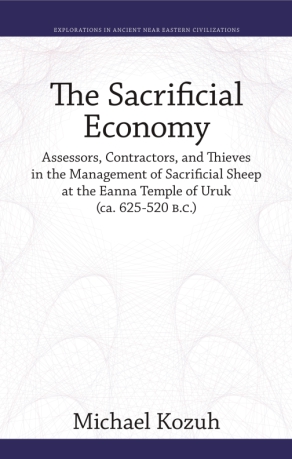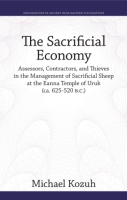
The Sacrificial Economy
Assessors, Contractors, and Thieves in the Management of Sacrificial Sheep at the Eanna Temple of Uruk (ca. 625–520 B.C.)
Michael Kozuh
The Sacrificial Economy
Assessors, Contractors, and Thieves in the Management of Sacrificial Sheep at the Eanna Temple of Uruk (ca. 625–520 B.C.)
Michael Kozuh
“The book is a substantial contribution to current research, and the presentation of new, previously unpublished material as well as numerous references to additional unpublished texts is much appreciated. . . . Michael Kozuh raises numerous interesting issues in his discussion of the Eanna’s sacrificial economy. This book presents a number of newly published texts and many references to further material, and is likely to infuse the discussion of the complicated issue of livestock management in the Eanna with new vigor.”
- Description
- Reviews
- Table of Contents
“The book is a substantial contribution to current research, and the presentation of new, previously unpublished material as well as numerous references to additional unpublished texts is much appreciated. . . . Michael Kozuh raises numerous interesting issues in his discussion of the Eanna’s sacrificial economy. This book presents a number of newly published texts and many references to further material, and is likely to infuse the discussion of the complicated issue of livestock management in the Eanna with new vigor.”
1. Introduction
2. Sources, Methodology, Prior Literature, and Terminology
3. The Herdsmen and Their Formal Relationship with the Eanna
4. Balances
5. Balances, Incentives, and Restrictions
6. Managing the Herdsmen
7. Entrepreneurial Debt and Systemic Stress
8. The Internal Livestock Management of the Eanna of Uruk
9. The System at Work
Bibliography
Index of Texts Cited
Index of Topics
DVD: Photos of Texts Published
Mailing List
Subscribe to our mailing list and be notified about new titles, journals and catalogs.



